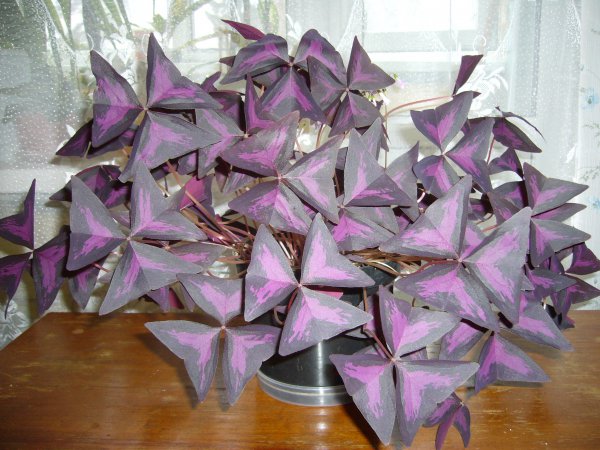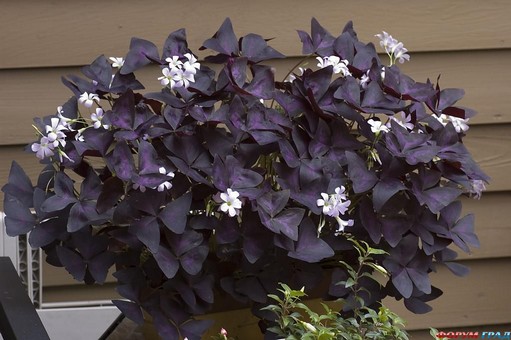Butterfly flower: care, watering, photo, reproduction and transplant
Flower butterfly or Oxalis is an unusually simple plant, in nature it creates a blanket of shade in a humid forest, and indoors it is a houseplant that resembles a flock of butterflies crouched in a dream window.
For the unusual shape of the leaf, which personifies the Holy Trinity, the inhabitants of Ireland made the Butterfly Flower a national symbol and placed it on their coat of arms. The homeland of the Butterfly Flower is considered to be tropical and subtropical places on the continents. In our time, the thickets of the Butterfly Flower are found in the forests of the South of America, in Africa, the South of Europe, as well as in the spruce forests of the Russian Federation.
A butterfly flower is a flower with sour-tasting leaves, which are also popularly called hare cabbage. Oxalis leaves contain salt of sorrel acid, contain a lot of carotene, vitamin C and are edible. Among the flowers of the butterfly there are grass, shrubs and shrubs, some species have a rhizome, bulb or edible tuber.
Butterfly flower leaves are formed from 3-4 or more leaves, flowers come across without leaves at all. Some Butterfly Flowers have leaves at night, when exposed to the bright sun or during rain.
The flowers are regular in shape, have five petals with white, pink, lavender, purple or yellow flowers, usually collected in an umbrella inflorescence. The fruit of the Butterfly Flower is a box that, when ripe, cracks and bursts, the seeds are scattered at a distance of 2 meters. Weed species are also found among the butterfly flowers.
Butterfly flower - care:

Lighting:
Grown on east or west windows, but still the butterfly flower needs a certain amount of sunlight, which is desirable in the morning.
Temperature:
The preferred temperature for the butterfly flower will be in the region of 18-20 ° С in summer, in winter - at least + 7 ° С. The butterfly flower loves cool places, but the plant is also resistant to high temperatures.
Watering:
In the summer, the soil should have time to dry between watering, watered for four or five days in a row. In winter, watering in limited quantities, watered with soft water at room temperature.
Humidity:
The butterfly flower needs medium humidity. At low temperatures, the flower easily survives the dry air in the apartment. At high temperatures, it is recommended to spray or keep in a pallet with wet expanded clay.
Top dressing:
From spring to autumn, they are fertilized once a month with soluble fertilizer in half doses.
Transfer:
The butterfly flower is transplanted as the pot is full of tubers, which grow quite quickly. Young plants are transplanted annually, an adult flower is transplanted once every two years. 
Reproduction:
In the spring, propagated by seeds. Seeds are best planted in soil with moist peat and perlite. The flower pot is covered with polyethylene, fixed with an elastic band. Placed in an environment with indirect sunlight. After the grains have germinated, transplant the flower into a permanent soil mixture in a separate pot.
The butterfly flower is easily propagated by dividing the plant when transplanting. The butterfly flower also reproduces by tubers, which are planted at the end of the winter season, the beginning of the spring, up to one centimeter deep. Butterfly flower is propagated by cuttings of leaves. Bleached leaves with a petiole germinate in water, roots germinate quickly in the spring. A couple of leaves are planted in one pot.
Some features:
In bright light and with a lack of watering, the leaves dry out. They must be removed in a timely manner.
Butterfly flower - diseases and pests:
The flower is affected by the butterfly mealybug and scabbard, whitefly, aphids, spider mites. A butterfly flower rarely gets sick. When over-watering, the plant can rot.
